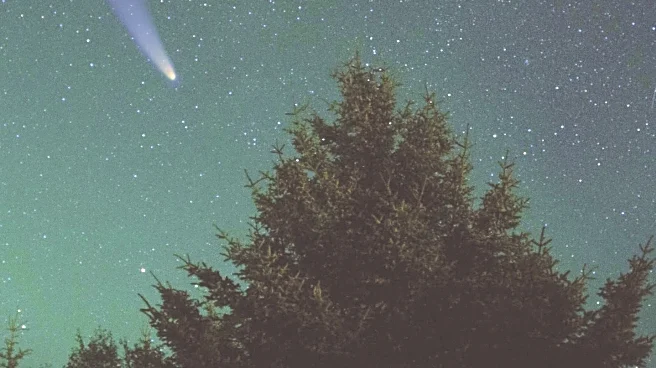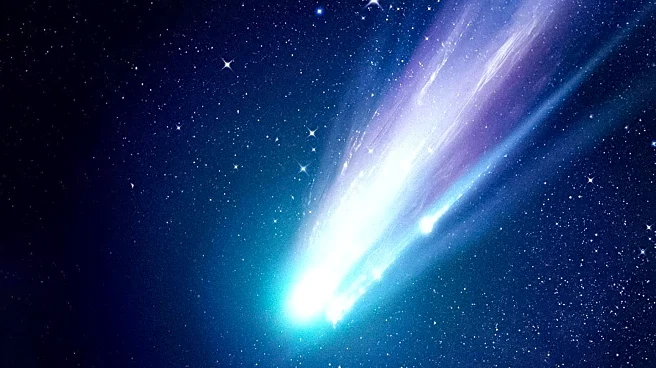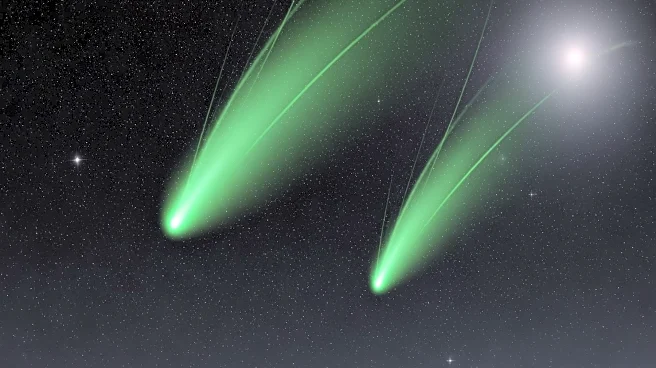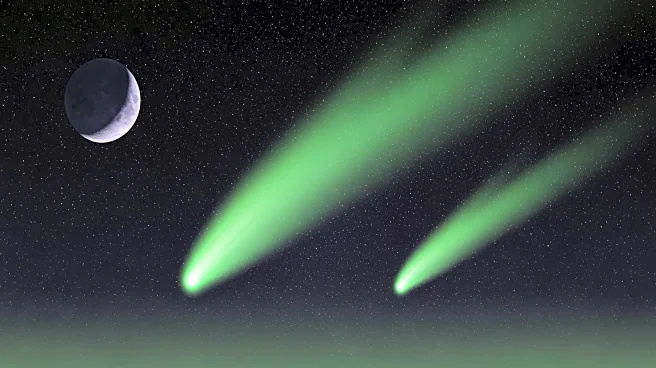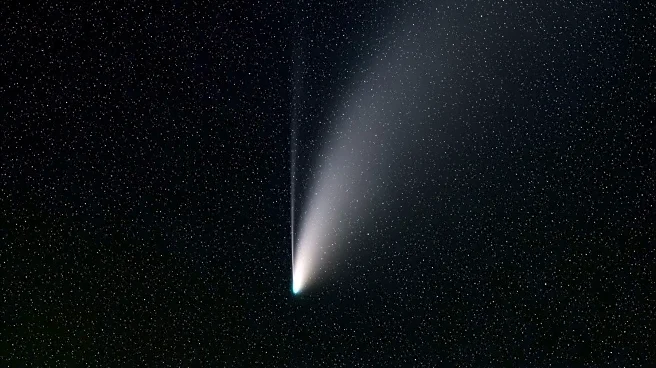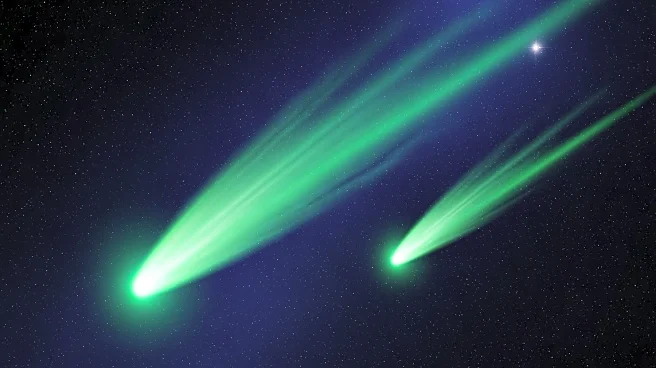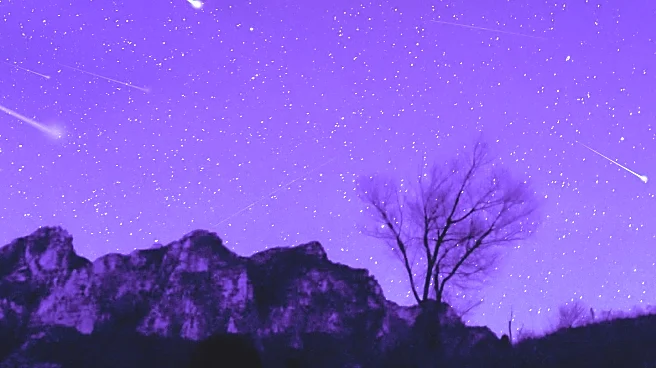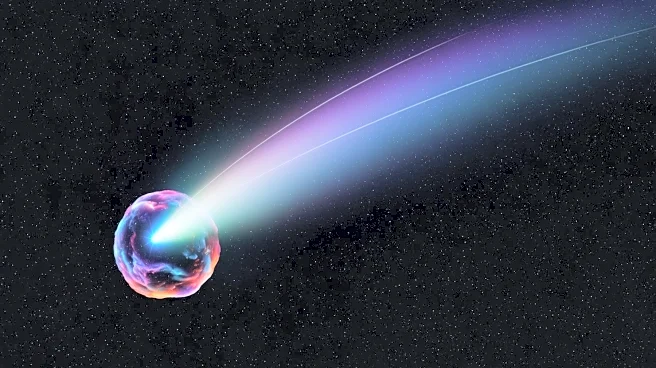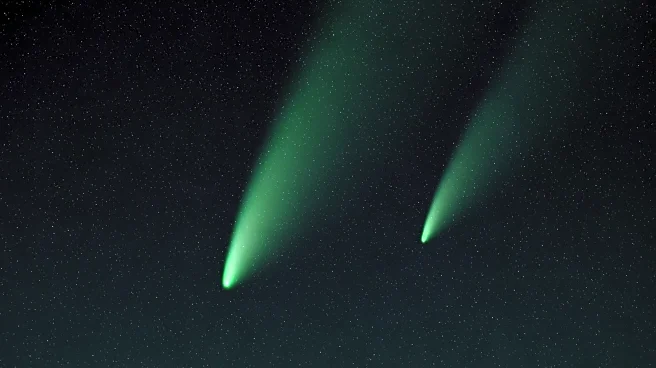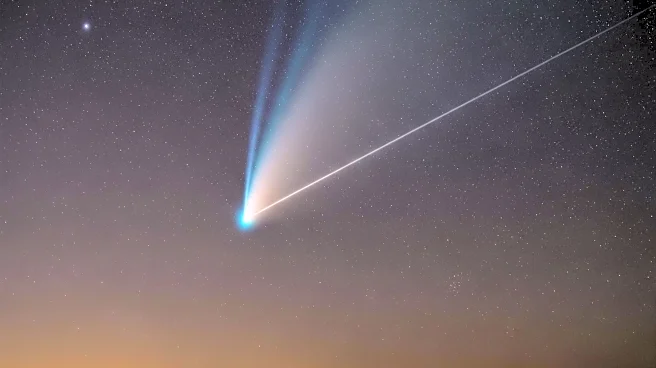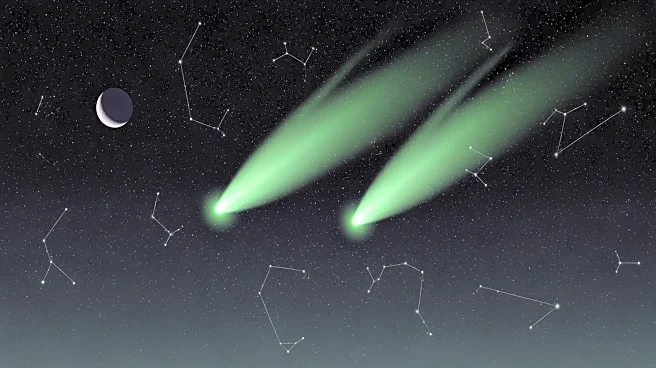What's Happening?
Stargazers in the Hudson Valley are anticipating a rare celestial event as two comets, C/2025 R2 (SWAN) and C/2025 A6 (Lemmon), are expected to be visible in the night sky around October 21. Comet C/2025 R2 (SWAN) is estimated
to have a brightness of magnitude +6.1, while Comet C/2025 A6 (Lemmon) is expected to reach magnitude +5, making them strong binocular objects. Both comets will be visible in the evening skies of the Northern Hemisphere, with their brightness potentially increasing near their closest approach to Earth.
Why It's Important?
The simultaneous visibility of two comets in a single month is a rare occurrence, offering a unique opportunity for skywatchers to observe these celestial bodies. This event highlights the dynamic nature of our solar system and the ongoing interactions between comets and the sun. The visibility of these comets encourages public interest in astronomy and provides an opportunity for educational engagement with the night sky. The event also underscores the importance of timing and environmental conditions in astronomical observations.
What's Next?
Observers are advised to use binoculars for better viewing of the comets, which will be visible in the western and southern skies about 45 minutes after sunset. The comets will move through various constellations, including Libra, Scorpius, and Sagittarius. Stargazers are encouraged to find dark locations with minimal light pollution to enhance their viewing experience. The event may inspire further interest in upcoming celestial phenomena, fostering a greater appreciation for the wonders of the universe.
Beyond the Headlines
The appearance of two comets in the night sky underscores the unpredictable nature of cometary activity and the factors influencing their visibility. This event serves as a reminder of the ongoing interactions between celestial bodies and the sun, offering insights into the processes that shape our solar system. The comets' visibility also highlights the role of amateur astronomers in discovering and tracking celestial phenomena, contributing to the broader scientific community.
